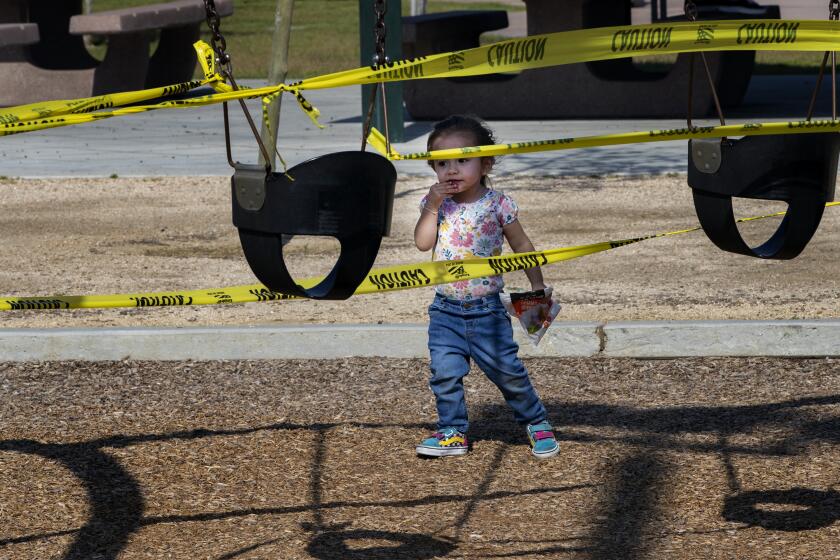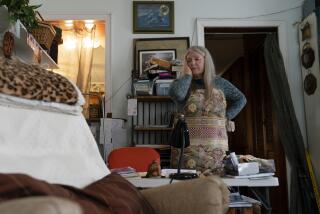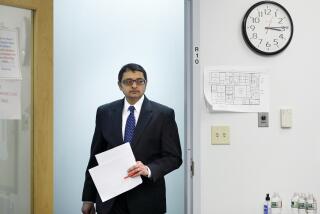How citizen scientists can help fight COVID-19
- Share via
As the new coronavirus continues its assault on humanity, scientists are fighting back by gathering data from an unlikely source: ordinary people.
With a smartphone app and a little free time, anyone 18 or older can contribute valuable information that might help bring the COVID-19 pandemic under control, researchers say.
The apps ask volunteers — whether they’re feeling healthy or sick — to log their symptoms. Some ask for permission to tap into the health data that smartphones and fitness trackers collect as a matter of course. Others search out more context, asking participants about their success in social distancing and the status of their jobs, among other things.
At a time when most people are isolating themselves at home, this kind of crowdsourcing could make a world of difference to researchers, said Dr. Gregory Marcus, a cardiologist and a co-leader of a UC San Francisco initiative called COVID-19 Citizen Science.
One of the main goals, he said, “is to try to identify the behaviors that we all have direct control over that may or may not influence our risk of infection.”
Since it emerged late last year in Wuhan, China, the coronavirus that causes COVID-19 has infected about 1.5 million people and killed nearly 88,000 around the globe. But the manner in which it has spread and the damage it has done have varied among different people and in different places.
Scientists have been working overtime to understand key characteristics about COVID-19 — such as patterns in the disease’s spread and what behaviors or other factors make one person more susceptible than another — that could help them find ways to stop it in its tracks.
Much of that research has involved small numbers of COVID-19 patients. Larger studies tend to take more time.
By using smartphone apps, researchers can potentially gather real-time data from hundreds of thousands of people as they go about their daily lives — and perhaps draw useful insights sooner than they might have otherwise.
This format “provides much more pragmatic and real-world information, so it’s much more immediately actionable,” said Dr. Steven Steinhubl, director of digital medicine at the Scripps Research Translational Institute.
The novel coronavirus is making plain each day just how vulnerable we humans are to a brand new infectious disease. But humanity has an ally in robots.
It helps that about 1 in 5 Americans use some kind of smart watch or fitness tracker that connects to their phones, according to a Pew Research Center survey.
Citizen science projects give researchers access to a wider range of participants than traditional studies, which usually draw upon people who live near academic medical centers, Steinhubl said.
“People who have historically been underrepresented in research, people who live in rural communities, people who live in economically depressed communities where there aren’t the large academic centers, have been left out of research,” said Steinhubl, who helps run a Scripps crowdsourcing study called DETECT. “This allows anybody anywhere who’s interested to be able to participate and provide information.”
It’s also a highly adaptable platform that can incorporate new data as it becomes available, he added. Today’s devices measure heart rate, sleep quality and duration, physical activity and even blood oxygen levels.
“Digital trials allow us to really iterate the whole time,” Steinhubl said. “You can always keep improving ... which from a research standpoint allows you to keep answering questions in a better and better way.”
The DETECT study, which uses the MyDataHelps app, pulls heart rate, activity and sleep data from wearable trackers and asks users to log any respiratory systems, the timing of any treatments they’ve taken and any diagnostic test results they’ve received. They can also choose to share electronic health record data.
Volunteers who download the UCSF app are asked to complete a brief daily survey about the health of everyone in their household, as well as the number of people who came within six feet of them in the past 24 hours.
Longer surveys sent out on a weekly basis ask about employment, income and physical activity, among other things; monthly questionnaires probe volunteers’ mental health. Participants are also asked about things like hygiene practices.
The answers could help unlock some of the virus’ secrets — especially when combined with volunteers’ location information and health stats, as well as the hospitalization and death rates in their area.
“The project is built to be nimble and ideally to able to answer more than one question,” Marcus said.
Among them: Why does the disease hit the elderly so hard? Exactly how effective are stay-at-home orders in slowing the virus’ spread? How is sheltering in place affecting our physical activity and mood? What everyday behaviors (or exposures) might influence the risk of infection or transmission?
Other citizen science efforts are in the works or being deployed as well. The COVID Symptom Tracker app takes a more straightforward approach, asking participants if they’ve been tested and if they’re feeling well. (If they’re not feeling well, a suite of questions about their symptoms and their location follows.)
The creators of the app — an international consortium whose members include Massachusetts General Hospital, Harvard University and King’s College London — hope is to search out new symptoms, target COVID-19 hot spots and potentially use it as a planning tool for localized quarantines.
Steinhubl’s previous work drew upon heart-rate data from Fitbit trackers and found that people experienced a discernible rise in heart rate before flu-like symptoms set in. He hopes citizen scientists will reveal whether an early sign of COVID-19 infection lies hidden in people’s heartbeats before a fever takes hold.
The coronavirus changed our lives. Health experts discuss how we might get back to normal.
In addition to including a wider range of participants, app-based studies are cheaper to run. Digital platforms can potentially take thousands more patients without adding on much extra cost or effort, the researchers said.
Getting people to sign up can be the easy part; persuading them to keep contributing information is often more challenging, Steinhubl said.
“Altruism will open the door for people to join many studies because people are good people and they want to help,” he said. “But altruism doesn’t usually lead to long-term stickiness for people staying.”
The key, he said, is to give patients something of value they wouldn’t otherwise have. For DETECT, the plan is for that to be visual representations of their predicted and actual heart rates, along with information on local COVID-19 infections and associations with environmental patterns, such as those that might cause allergies that could be mistaken for illness.
The UCSF team plans to ask its citizen scientists to submit their own research questions that could be answered by probing the data.
Steinhubl said app-based projects could go even further, perhaps by sending test kits to participants and encouraging people to self-isolate even if they are asymptomatic.
“The digital study allows us to look at healthcare from a completely different way,” he said.
Both Marcus and Steinhubl say they hope to enroll a million people, if not more, in their respective studies. After all, the more participants there are, the more questions scientists can answer — and the more precise the answers may be.
“The confidence of the answer grows as the number of people contribute,” Marcus said.









